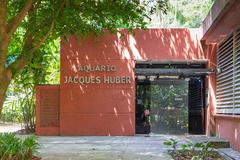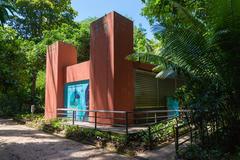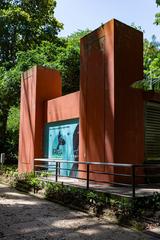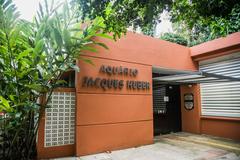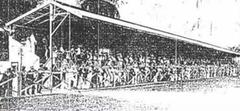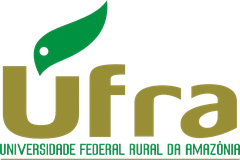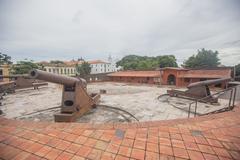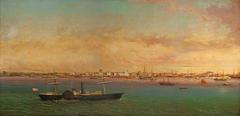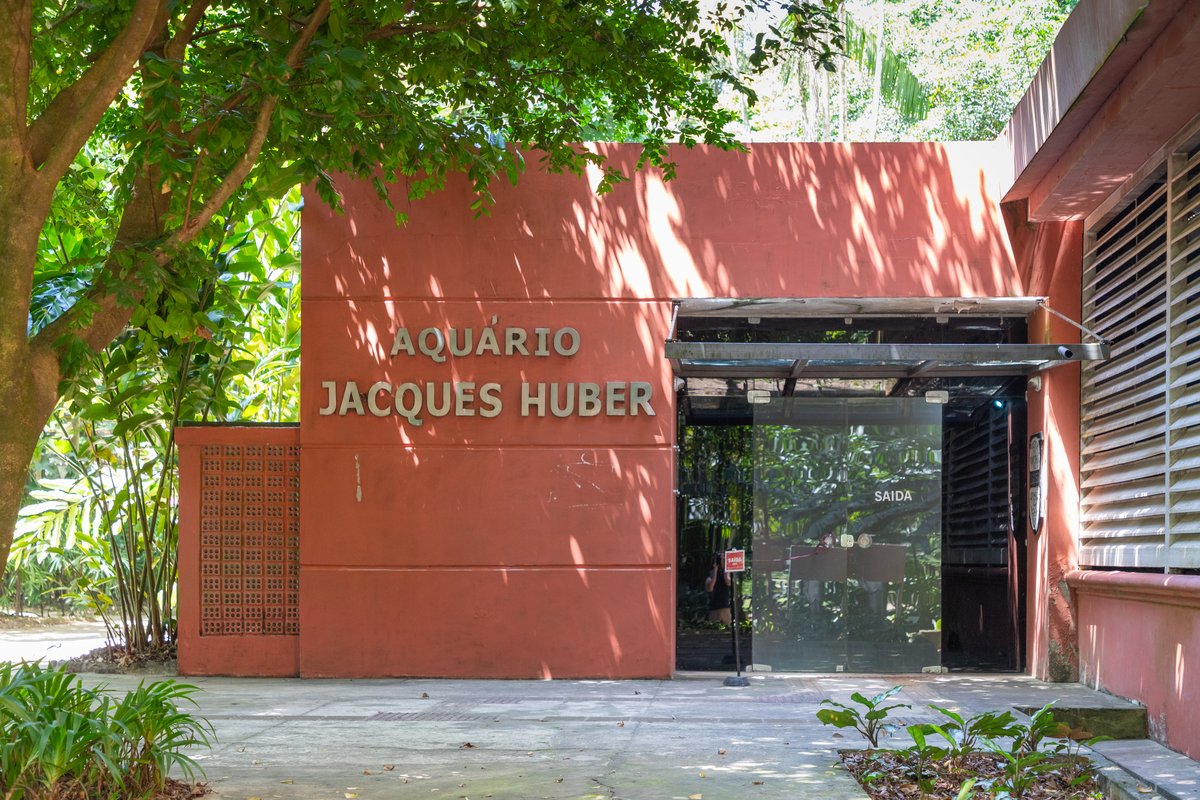
Jacques Huber Aquarium Visiting Hours, Tickets, and Travel Guide in Belém, Brazil
Date: 14/06/2025
Introduction
Located within the renowned Museu Paraense Emílio Goeldi in Belém, Pará, the Jacques Huber Aquarium is a gateway to the Amazon’s vibrant aquatic biodiversity. As Brazil’s oldest public aquarium, it is named after Jacques Huber, the Swiss botanist whose pioneering work shaped Amazonian science and conservation. The aquarium fuses historical legacy, research, conservation, and inclusive education, making it a cornerstone of environmental stewardship in the region.
This guide provides a comprehensive overview of visiting hours, ticketing, accessibility, and travel tips, alongside insights into the aquarium’s scientific and cultural contributions. Nearby attractions such as Ver-o-Peso Market and the museum’s botanical gardens are also featured, helping you make the most of your visit to Belém’s rich heritage (Scielo; Neocultura; Museu Goeldi official site).
Quick Contents
- Overview: Why Visit Jacques Huber Aquarium?
- History and Jacques Huber’s Legacy
- Aquarium Development and Conservation Mission
- Modernization and Accessibility
- Visitor Information: Hours, Tickets, Amenities
- Travel Tips & Nearby Attractions
- Frequently Asked Questions (FAQ)
- Summary & Visitor Tips
- Sources
Why Visit the Jacques Huber Aquarium?
Set within the Museu Paraense Emílio Goeldi’s Zoobotanical Park, the Jacques Huber Aquarium immerses visitors in the Amazon’s aquatic ecosystems. With over 30 native species—including pirarucu, electric eels, and regionally significant reptiles—the aquarium offers an unparalleled educational and visual experience. Its integration with the museum’s broader exhibition spaces enables a seamless journey through both aquatic and terrestrial Amazonian habitats.
History and Jacques Huber’s Legacy
Founded in 1911 and named after Jacques Huber (1867–1914), the aquarium reflects the vision of its namesake, who was a driving force behind Amazonian botanical research and the development of the Zoobotanical Park. Huber’s tenure as museum director saw the organization of scientific collections and the establishment of living exhibits for public education. His contributions continue to resonate through the aquarium’s ongoing research and conservation activities (Scielo).
Aquarium Development and Conservation Mission
The aquarium was conceived as both a public exhibition and a research hub. Early exhibits emphasized scientific accuracy and ecological context, making use of detailed interpretive panels and tactile displays. Over time, the aquarium expanded its educational reach, becoming a model for informal science learning. Interactive features, such as tactile fish replicas and videos in Brazilian Sign Language (LIBRAS), make the aquarium accessible to a diverse audience, including children, families, and visitors with disabilities (Neocultura; Academia.edu).
The aquarium also plays a vital role in conservation, maintaining live populations of endangered Amazonian species and supporting research that informs sustainable management of aquatic resources.
Modernization and Accessibility
Recent years have seen significant updates to enhance both accessibility and visitor engagement. Modern amenities include:
- Audioguides and LIBRAS videos: For inclusive learning.
- Tactile exhibits: For visually impaired visitors.
- Wheelchair ramps and accessible restrooms: Ensuring physical accessibility.
- Updated digital materials: Presenting scientific information in user-friendly formats.
These improvements align the aquarium with global best practices in museum accessibility and interactive education (Neocultura).
Visitor Information
Hours
- Tuesday to Sunday: 9:00 AM – 5:00 PM
- Closed on Mondays and public holidays
Tickets
- Adults: R$10
- Students and seniors: R$5 (with valid ID)
- Children under 6 and individuals with disabilities: Free
- Where to Buy: At the museum entrance (early arrival recommended on weekends/holidays); some online ticketing available (Museu Goeldi visitor info).
Amenities
- Accessible restrooms throughout the grounds
- Café serving snacks and local specialties
- Gift shop with books, crafts, and souvenirs
- Family-friendly spaces and guided tours (primarily in Portuguese; English available for groups with advance booking)
- Filtered water stations; bring a reusable bottle
Accessibility
- Wheelchair-accessible paths and ramps (note: some older garden paths may be uneven)
- Tactile exhibits and LIBRAS videos
- Family and baby facilities
Travel Tips & Nearby Attractions
Getting There
- Location: Museu Paraense Emílio Goeldi, Avenida Magalhães Barata, São Brás, Belém
- Transport: Easily reached by bus, taxi, or ride-sharing. Limited on-site parking.
Best Times to Visit
- Weekday mornings for a quieter experience
- Avoid local holidays and festival weeks (e.g., Círio de Nazaré in October)
Nearby Attractions
- Botanical Gardens and Zoo: Within the museum complex
- Ver-o-Peso Market: Iconic open-air market nearby
- Estação das Docas: Revitalized waterfront for dining and events
- Mangal das Garças: Scenic park and wildlife reserve
Safety & Comfort
- Use insect repellent in outdoor areas
- Keep valuables secure
- Portuguese is the main language; some brochures and limited staff assistance available in English/Spanish
Frequently Asked Questions (FAQ)
Q: What are the aquarium’s opening hours?
A: Tuesday to Sunday, 9:00 AM – 5:00 PM; closed Mondays and public holidays.
Q: How much are tickets and where can I buy them?
A: Adults R$10, students/seniors R$5, children under 6 and disabled visitors free. Purchase at the entrance or via the official website.
Q: Is the aquarium accessible for wheelchair users or visually/hearing impaired visitors?
A: Yes, with ramps, tactile exhibits, and LIBRAS resources throughout.
Q: Are guided tours available?
A: Yes, primarily in Portuguese; English tours available for groups with advance request.
Q: What else can I visit nearby?
A: Explore the museum’s zoo, botanical gardens, Ver-o-Peso Market, and Estação das Docas.
Summary & Visitor Tips
The Jacques Huber Aquarium is a unique institution blending history, science, conservation, and education in the heart of Belém. Its thoughtful exhibits, modern accessibility features, and integration with Amazonian research make it an essential stop for families, students, scientists, and tourists.
Quick Tips:
- Arrive early, especially on weekends or holidays.
- Combine your visit with nearby cultural and natural attractions.
- Use eco-friendly habits and respect museum guidelines.
- Follow the museum’s social channels for updates on events and special exhibits.
For more details, ticketing, and event schedules, always check the Museu Goeldi official site and their Instagram.
Sources and Further Reading
- Jacques Huber Aquarium Historical and Scientific Legacy, 2023, Scientific Journal of Museu Paraense Emílio Goeldi (Scielo)
- Museu Paraense Emílio Goeldi Aquarium Project Overview, 2024, Neocultura (Neocultura)
- Museu Paraense Emílio Goeldi Official Visitor Information, 2025 (Museu Goeldi official site)
- Jacques Huber Aquarium Visitor Engagement Study, 2023, Academia.edu (Academia.edu)
- Aquário Digital Jacques Huber (Aquário Digital Jacques Huber)
- Additional travel context: Postcard from Taylor – Belém Guide
